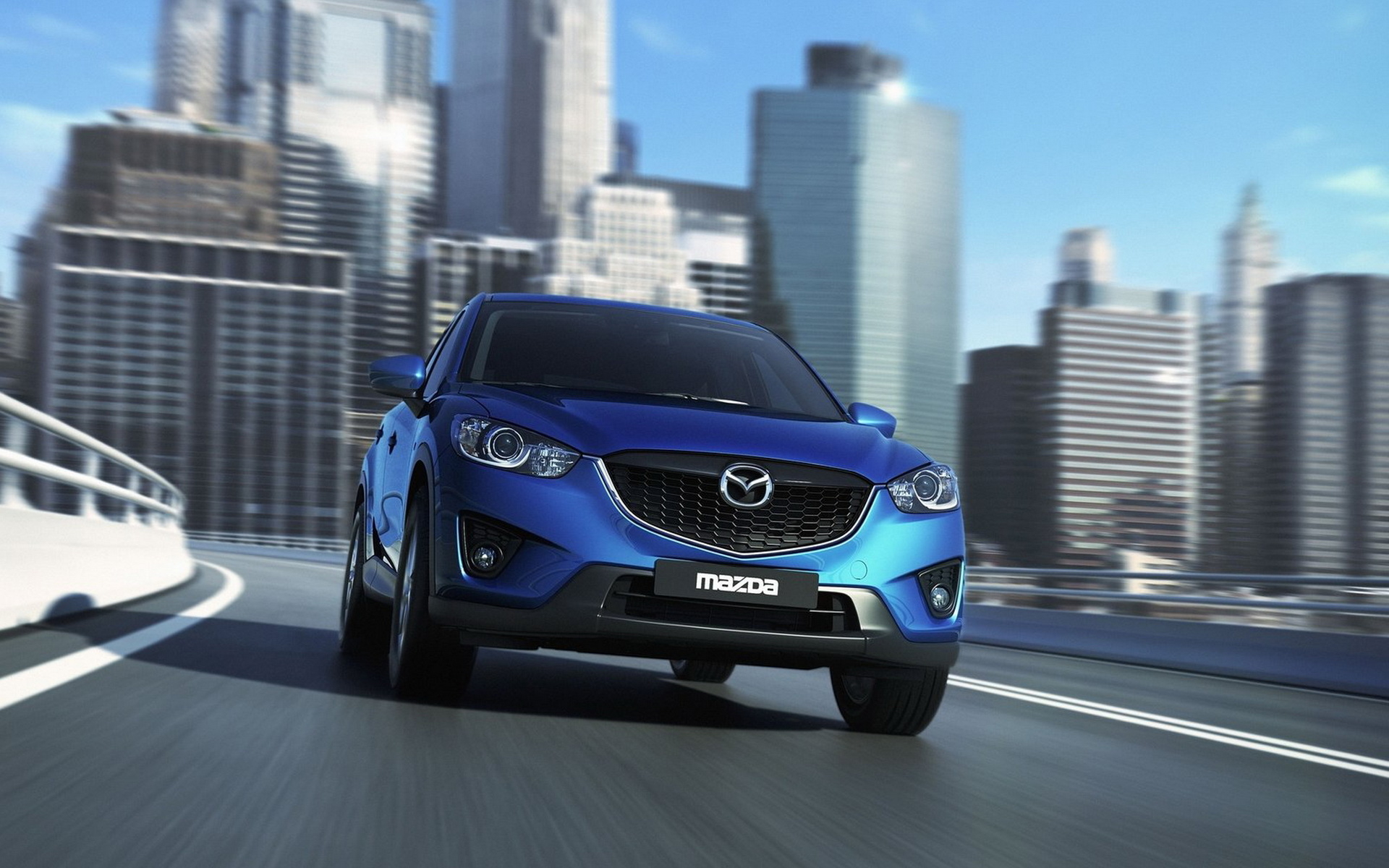Since the original Mazda CX-5 in 2012, the Japanese manufacturer has been on a roll.
The CX-5, a five-seat SUV with a price, size and specification that sees it straddle classes between the likes of the Nissan Qashqai and larger SUVs such as the seven-seat Skoda Kodiaq.
Buyers can choose between a front-wheel-drive 2.0-litre petrol or 2.2-litre diesel in either front- or all-wheel drive forms with two different power outputs.
Here’s a list of pros and cons
Space in the Mazda CX-5
There’s ample room in the front of the CX-5 to feel comfortable, as well as lots of storage. This includes large door pockets, a big lidded bin under the armrest and a decent glovebox.
The boot is similarly impressive. There’s a flat loading lip and a sensible load height, plus the same amount of space as you get in a Seat Ateca. That still puts it behind a Honda CR-V, Skoda Kodiaq and petrol VW Tiguan, but if you need to carry a set of golf clubs or a folded baby buggy plus a few large bags it won’t be a problem. Additionally, there are levers in the boot to drop the rear seats flat (on a 40:20:40 split), creating a vast load space.
Those rear seats are just wide enough for three adults to sit side-by-side, and headroom is excellent. You can also fit one six-footer behind another without cause for complaint, and the seatbacks can be set at one of two angles.
Comfort of the Mazda CX-5
The CX-5’s suspension is definitely on the firmer side for an SUV, particularly if paired with the larger 19-inch wheels, but this is partly mitigated by great seats and a fundamentally good driving position. What’s more, once up to speed the excellent body control that results from the firmer ride prevents the car from leaning uncomfortably in corners.
Mazda’s diesel engine is smooth and quiet once warmed through, but the petrol needs to be revved harder in order to make decent progress, which actually makes it the noisier of the two.
Road and wind noise at motorway speeds are both well controlled, making the CX-5 a useful long-distance companion.
Dashboard Styling of the Mazda CX-5
One of the stronger points of the SUV.
Mazda has gone to a lot of effort to ensure the dashboard in the latest CX-5 is a cut above its predecessor’s. This is evident in the high quality of the materials on show, while the clear dials and separate heater controls are straightforward to use.
It uses the same infotainment system as other Mazdas, which combines a touchscreen with a rotary controller to good effect. There aren’t as many features or menus to navigate as you get in some other cars, but what is there is easy to access. The lack of Apple CarPlay or Android Auto is a bit of a shame though, and having to delve into a sub menu to access live traffic information feels slightly obstructive.
Driving Ease of the Mazda CX-5
There’s no getting around the fact that the CX-5 feels larger than rivals such as the Qashqai. However, its controls are so well weighted, from the steering through to the gearshift, that it is completely intuitive to drive.
That all models have front and rear parking sensors helps with guiding the CX-5 into parking spaces, but nervous drivers might note that Mazda doesn’t offer the automatic parking functionality you can have on a VW Tiguan.
Overtaking shouldn’t be a problem, particularly in the diesel, which has a good slug of mid-range acceleration even if you opt for the lower-powered version. Also, if you want an automatic gearbox you are limited to the diesel engine.
You might not necessarily buy an SUV with the expectation of it being fun to drive, but the CX-5 is just that. The lack of body lean in corners certainly helps, but it’s the direct and reassuringly weighted steering and the keenness to change direction that really make it stand out.
The manual gearbox also has a clean shift action and the brakes feel very positive, which all adds up to what is one of the most satisfying SUVs to drive.
Reliabiliity of the Mazda CX-5
The company’s three-year, 60,000-mile warranty is a little lacking in a market where Renault will sell you a Kadjar with a four-year warranty, Hyundai offers five years on its Tucson and Kia sells the Sportage with seven years of cover.
Official fuel economy figures generally need to be taken with a pinch of salt. For that you can thank the way they are obtained in a laboratory environment and thus should only really be used for comparative purposes.
Do so with the CX-5 and its official averages of up to 56.5mpg for the diesel and 44mpg for the petrol are behind the likes of the Renault Kadjar and Nissan Qashqai. However, not only is the Mazda significantly more powerful than these rivals, but it also gets closer than most to its claimed figures in normal driving. As such, you can expect an easy 50-55mpg from a front-wheel drive diesel CX-5, or close to 40mpg from the petrol.
Safety in the Mazda CX-5
All CX-5s come with six airbags and an autonomous emergency braking system that works up to 50mph to help reduce or even prevent front-into-rear crashes. Between 6 and 50mph it will also spot pedestrians and apply the brakes it if thinks you’re likely to run into somebody.
An optional Rear Smart City Brake effectively does the same thing in reverse at speed between 1 and 5mph. This is part of a Safety Pack that also includes adaptive LED headlights, lane keeping assist, blind spot monitors and rear cross traffic alert.
Further Reading –

